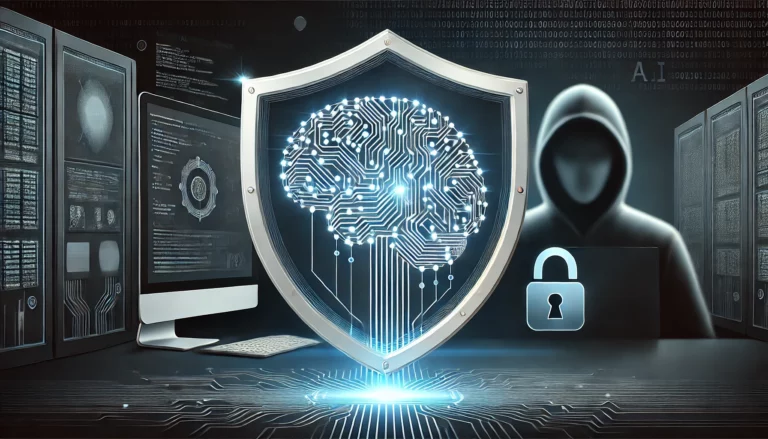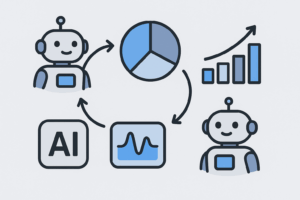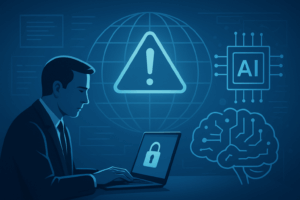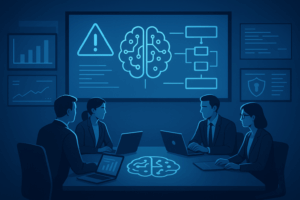Introduction
Artificial Intelligence (AI) is revolutionizing industries worldwide, enhancing productivity, automation, and decision-making. However, cybercriminals are also leveraging AI to launch more sophisticated and evasive cyber attacks. As AI continues to evolve, so do the threats it enables, posing serious challenges for businesses, security professionals, and governments.
In this article, we’ll explore how AI is being used in cybercrime, the risks associated with AI-driven attacks, and what organizations can do to defend against this next-generation threat.
How AI is Powering Cyber Attacks
Cybercriminals are now integrating AI into their attack strategies, making them faster, harder to detect, and more effective. Here are some of the most concerning AI-driven threats:
1. AI-Powered Phishing Attacks
Traditional phishing relies on poorly crafted emails with generic messages. With AI, cybercriminals can now generate highly personalized and convincing phishing emails using Natural Language Processing (NLP). AI can also analyze social media and corporate websites to craft hyper-targeted spear-phishing attacks, making it easier to deceive victims.
2. Deepfake Scams & Social Engineering
AI-powered deepfake technology allows cybercriminals to create realistic videos and voice recordings of executives, celebrities, or government officials. Attackers have used deepfake audio to impersonate CEOs and authorize fraudulent transactions, costing companies millions of dollars. The rise of deepfake-based social engineering poses a serious challenge for identity verification and trust.
3. Automated Malware & Polymorphic Attacks
AI enables the creation of self-mutating malware that can change its code to evade traditional antivirus detection. This AI-powered polymorphic malware can continuously evolve, making signature-based detection systems ineffective. Additionally, AI-driven malware can adapt to specific environments, making cyber threats more unpredictable.
4. AI-Driven Credential Stuffing & Brute-Force Attacks
AI allows attackers to automate password-cracking techniques at an unprecedented scale. By analyzing common password patterns and using machine learning, cybercriminals can accelerate brute-force attacks, making weak passwords more vulnerable than ever before.
5. AI-Enhanced Botnets & DDoS Attacks
Distributed Denial-of-Service (DDoS) attacks have become smarter with AI. Attackers now deploy AI-powered botnets that can adapt their attack strategies in real time, identifying the most vulnerable points in a network and launching coordinated attacks that overwhelm systems more efficiently.
The Risks and Implications of AI-Driven Cyber Threats
AI-powered cyber threats introduce several serious security and ethical concerns:
- Scalability of Attacks: AI enables automation of cybercrime, making large-scale attacks easier to execute.
- Difficulty in Detection: AI-generated phishing emails and deepfakes are often indistinguishable from legitimate content.
- Cost of Defense: Organizations must invest in advanced AI-driven cybersecurity solutions to counter AI-powered threats.
- Privacy & Data Security: AI-powered attacks can exploit vast amounts of personal and corporate data, leading to severe privacy breaches.
How Organizations Can Defend Against AI-Powered Cyber Attacks
As AI-driven threats grow more sophisticated, businesses and security teams must adopt proactive defense strategies. Here’s how:
1. Implement AI-Powered Cybersecurity Solutions
To combat AI-driven threats, organizations should leverage AI for threat detection, anomaly detection, and behavioral analysis. Machine learning models can identify suspicious activities that may indicate an AI-powered attack.
2. Strengthen Email Security & Phishing Detection
AI-driven email security tools can analyze email patterns and detect phishing attempts with greater accuracy. Employees should also be trained on recognizing AI-generated phishing scams.
3. Adopt Multi-Factor Authentication (MFA) & Password Managers
AI-powered credential stuffing can be countered with strong authentication methods. Implement MFA, biometric authentication, and password managers to reduce the risk of unauthorized access.
4. Enhance Deepfake Detection & Verification Processes
Businesses should invest in deepfake detection tools and implement video and voice verification processes before approving financial transactions or sensitive actions.
5. Continuous Security Awareness Training
Cybersecurity awareness training should now include AI-driven threats, ensuring employees can recognize AI-generated attacks, deepfakes, and phishing attempts.
6. Threat Intelligence & AI Monitoring
Organizations must adopt real-time threat intelligence solutions that leverage AI to detect evolving threats. AI-powered security analytics can identify patterns in cybercriminal behavior, helping businesses stay ahead of attackers.
Conclusion
The rise of AI-powered cyber attacks marks a new era in cybersecurity, where traditional defense mechanisms alone are no longer sufficient. As cybercriminals continue to weaponize AI, businesses must adopt AI-driven security solutions, strengthen authentication measures, and enhance employee training to stay resilient.
The cybersecurity landscape is evolving rapidly—will your organization be prepared? Stay informed, stay secure, and embrace AI for defense, not just offense.
#CyberSecurity #AIThreats #DeepfakeScams #PhishingAttacks #CyberRisk #InfoSec #ThreatIntelligence #ApplicationSecurity #AIandCybersecurity




